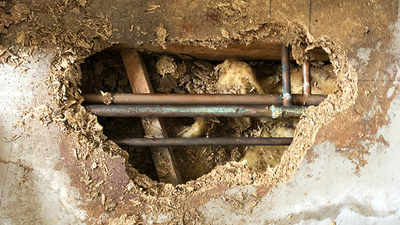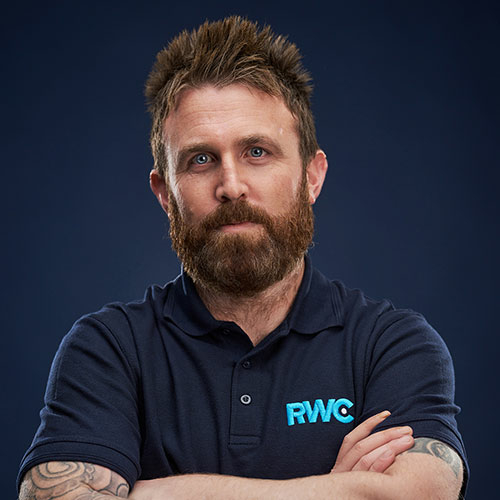Repair and renovations: How to futureproof older plumbing systems

In the world of home improvement, updating older plumbing systems is a crucial yet often overlooked aspect of renovations. As technology advances and plumbing standards evolve, the need to futureproof legacy systems becomes imperative.
Today, homeowners increasingly seek environmentally conscious and cost-effective solutions, and the incorporation of smart plumbing technologies emerges as a key theme. From leak detection systems to energy-efficient heating systems, these technologies not only contribute to a greener footprint but also empower homeowners with real-time insights into their water consumption habits.
In this blog we discuss our top tips on how installers can modernise ageing plumbing systems, ensuring efficiency, durability and compliance with contemporary standards.
1. Thorough inspection
Always begin the process by conducting a complete inspection of the existing plumbing infrastructure. Identify outdated materials, potential leaks, and areas at risk of damage or corrosion. This initial assessment serves as the foundation for targeted improvements and will save you time in the long run!
To cover all bases, the inspection should delve into potential leak points, as even minor leaks can escalate into major problems over time. By pinpointing these vulnerabilities early on, installers can proactively address and resolve these issues before they result in water damage, mould growth, or other structural complications.
In older homes with ageing plumbing systems, areas susceptible to corrosion demand particular attention, as corrosion jeopardises pipe durability and risks water contamination. An effective solution involves replacing corroded or deteriorating pipes with resilient materials like PEX pipe or Layflat Polybutylene pipe. While copper pipes are known for durability, plastic pipes provide an excellent, flexible, corrosion-resistant, and durable alternative.
2. Upgrade historic pipework and fittings
The second step in futureproofing older plumbing systems involves a deliberate upgrade of fixtures and appliances – a process that not only aligns with modern environmental standards but also yields substantial long-term benefits. Outdated fixtures and appliances contribute to water and energy waste but can also compromise the overall efficiency of the plumbing system.
JG Speedfit Twist & Lock® plastic push-fit fittings revolutionise the installation process by eliminating the need for tools and flames. These fittings provide an efficient and time-saving solution for both installation and demounting, facilitated by the primary O-Ring seal and the Grip & Seal™ collet featuring stainless-steel teeth.
When paired with JG Speedfit’s Superseal Inserts, these components collectively generate a distinctive multi seal, ensuring a secure connection. Designed to meet diverse plumbing retrofit requirements, the fittings come in various configurations, including tees, elbows, and straight connectors. This versatile range streamlines the installation of retrofit projects from any angle, simultaneously enhancing safety and the longevity of plumbing systems.

3. Integrate smart technologies
We’re all used to technology making every aspect of our lives easier – and the same is true of plumbing technologies. Installing sensors, leak detection systems, and smart water meters can help to actively monitor usage and identify potential issues before they escalate. Smart technologies enhance efficiency and provide homeowners with greater control over their water consumption.
Smart sensors play a crucial role in this approach, providing real-time data on water usage and detecting irregularities that may indicate leaks or inefficiencies. Leak detection systems, in particular, contribute to early identification of leaks, enabling timely repairs and preventing extensive water damage. These technologies enable installers to take prompt action, avoiding the costly repercussions associated with undetected plumbing issues.
Innovations such as the MultiSafe Leak Detector by Reliance Valves mark the forefront of intelligent plumbing solutions designed for domestic use. This smart system seamlessly integrates with the entire plumbing infrastructure of a property, allowing real-time detection of leaks. Upon identifying a leak, the system promptly activates an in-built isolation valve, effectively halting water flow to the affected area, preventing additional wastage and potential damage.

4. Ensure adequate insulation
Adequate insulation is crucial, especially in older homes where pipes are more susceptible to temperature fluctuations. Insulating pipes helps to prevent freezing during colder months and minimises heat loss, ensuring consistent water temperature and reducing energy costs. In fact, as part of the 2023 updates to Part L of the Building Regulations, pipe insulation is now an essential part of minimising heat loss from pipes.
Insulating pipes serves a dual purpose, addressing concerns related to both freezing temperatures and heat loss. During colder months, proper insulation acts as a barrier, preventing pipes from freezing and potentially bursting. This preventative measure not only safeguards against structural damage but also contributes to the longevity of the plumbing system.
Futureproofing older plumbing systems is not merely a technical endeavor; it is a complete approach that combines technological advancements with sustainable practices. When embarking on the journey of renovating homeowners’ plumbing infrastructure, installers need to show a commitment to efficiency, conservation, and proactive maintenance. In doing so, they are responsible for laying the foundation for a resilient plumbing system that stands the test of time and aligns with the evolving landscape of modern living.
Family of Brands
To find out more about the solutions that are helping installers to futureproof plumbing and heating systems, click below.
